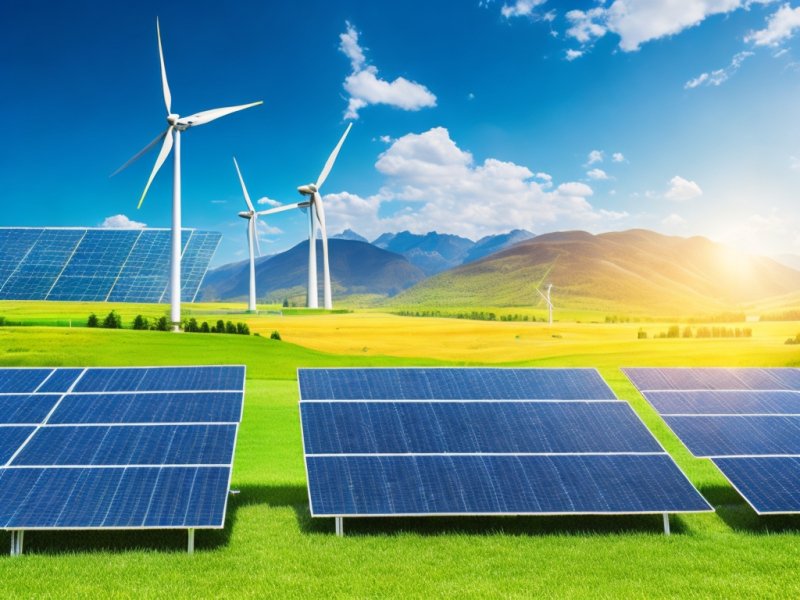
Introduction:
In the face of climate change and the need to reduce greenhouse gas emissions, the world is undergoing a significant shift towards sustainable and clean energy sources. Green technology, also known as clean technology or cleantech, has emerged as a powerful tool in revolutionizing energy production. By harnessing renewable resources and implementing innovative solutions, green technology is paving the way for a more sustainable and environmentally friendly future. In this blog post, we will explore how green technology is transforming energy production and shaping the way we generate power.
1. Renewable Energy Sources:
One of the primary ways green technology is revolutionizing energy production is through the utilization of renewable energy sources. Unlike fossil fuels, which are finite and contribute to climate change, renewable energy sources such as solar, wind, hydro, and geothermal power are abundant and have minimal environmental impact. Green technology is driving the adoption of these clean energy sources by making them more efficient, affordable, and accessible.
a. Solar Power: Solar technology has seen remarkable advancements, with improvements in photovoltaic cells, solar panels, and energy storage systems. Green technology is enabling the widespread installation of solar panels, both in large-scale solar farms and on residential rooftops. The increased efficiency and declining costs of solar power are making it an attractive option for energy production worldwide.
b. Wind Power: Green technology is also revolutionizing the wind energy sector. Innovations in wind turbine design, including taller towers and larger rotors, have significantly increased energy output. Moreover, advanced data analytics and machine learning algorithms are being employed to optimize wind turbine performance, improving reliability and reducing maintenance costs.
c. Hydro and Geothermal Power: Green technology is unlocking the potential of hydroelectric and geothermal power generation. New technologies are being developed to enhance the efficiency of hydroelectric dams and harness the energy of ocean waves and tidal currents. Geothermal power, which taps into the Earth's heat, is being utilized in geologically suitable regions, providing a reliable and sustainable energy source.
2. Energy Storage and Grid Integration:
One of the key challenges of renewable energy sources is their intermittent nature. Green technology is addressing this issue through the development of advanced energy storage systems and grid integration solutions. By efficiently storing excess energy during periods of high production, energy storage technologies such as lithium-ion batteries, pumped hydro storage, and advanced fuel cells ensure a continuous and reliable supply of power.
Smart grid technologies, another facet of green technology, are transforming the traditional energy grid into a more intelligent and flexible network. These grids integrate renewable energy sources, energy storage systems, and advanced monitoring and control systems. Through real-time data analysis and automated demand response mechanisms, smart grids optimize energy consumption, reduce transmission losses, and enable seamless integration of distributed energy resources.
3. Energy Efficiency and Conservation:
Green technology is not limited to renewable energy sources and grid solutions; it also plays a vital role in improving energy efficiency and conservation. Energy-efficient technologies are reducing energy consumption across various sectors, from buildings and transportation to industrial processes.
a. Smart Buildings: Green technology is driving the development of smart buildings equipped with energy management systems, efficient lighting, and intelligent HVAC (Heating, Ventilation, and Air Conditioning) systems. These buildings use sensors, automation, and data analytics to optimize energy usage, resulting in significant energy savings.
b. Electric Vehicles: The transportation sector, a significant contributor to greenhouse gas emissions, is being transformed by green technology. The development of electric vehicles (EVs) and the establishment of charging infrastructure are reducing reliance on fossil fuels. Moreover, advancements in battery technology are increasing the range and performance of EVs, making them a viable alternative to traditional combustion engines.
c. Industrial Processes: Green technology is driving energy-efficient practices in industries through the adoption of clean manufacturing processes, waste heat recovery systems, and energy-efficient equipment. These measures not only reduce energy consumption but also improve the overall sustainability of industrial operations.
Conclusion:
Green technology is at the forefront of revolutionizing energy production and driving the transition to a more sustainable and low-carbon future. Through the utilization of renewable energy sources, advancements in energy storage and grid integration, and the promotion of energy efficiency and conservation, green technology is reshaping the energy landscape. By embracing these innovations and supporting further research and development, we can accelerate the deployment of green technology and create a cleaner and more resilient energy system for generations to come.
Share This News